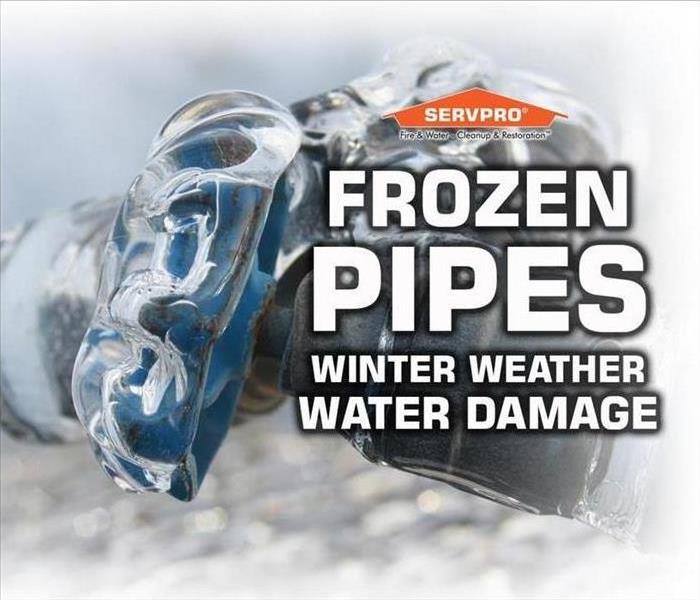Insulating Your Pipes
12/1/2020 (Permalink)
As temperatures begin to drop, you’re bound to get notices of freeze warnings. In the Midlands area, it’s not common for us to see temperatures below freezing for more than a few hours at a time, but it’s best to act with caution when it comes to your home.
Insulating water supply pipes in exposed areas of your home, is an easy and affordable way to limit the risk of water damage during colder months. Water supply pipes that are exposed to exterior walls, unheated spaces and inside cabinets, can freeze, burst and cause water damage to your home. In addition to reducing the risk of a frozen pipe, you’re able to cut down on your energy costs. Hot water pipes that are exposed to cold temperatures require more energy or power, to maintain their warm temperature.
Pipe insulation does not have to be seasonal – in the summer time a cold-water supply that comes in contact with warmer air, creates condensation along the line. That condensation increases the humidity levels within the house and can also cause water damage. Some of the same practices used in the winter have proven beneficial all year-round.
There are several methods that can be used when insulating pipes. The method you choose depends upon the end goal. Are you hoping to prevent frozen pipes? Lower water-heating costs? Or to prevent your pipes from sweating?
- Prevent Frozen Pipes: you’ll want to focus on the pipes that run through unheated spaces. That includes exterior walls, unheated garages, floor cavities above crawl spaces, and unheated attics.
- Lower Water-Heating Costs: you’ll want to focus on hot water pipes where accessible. Insulating the water lines that leave your hot water heater is a great place to start.
- Prevent Pipe Sweating and Humidity: you’ll focus on the cold-water lines that are exposed in and around your home. Especially in basements.
Insulation Methods - There are so many to choose from, do your research on what works best for your home/region.
- Pipe wrap
- Foam pipe sleeves
- Wall insulation
- Faucet covers on outdoor spigots
- Installing frost-proof outdoor spigots
- Insulating gaps where pipes enter walls.

 24/7 Emergency Service
24/7 Emergency Service
